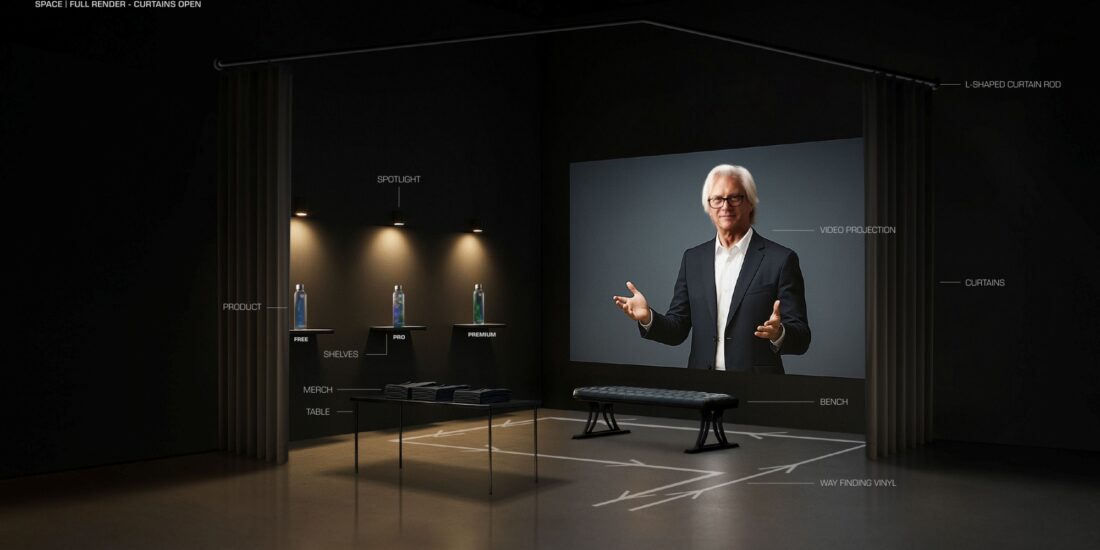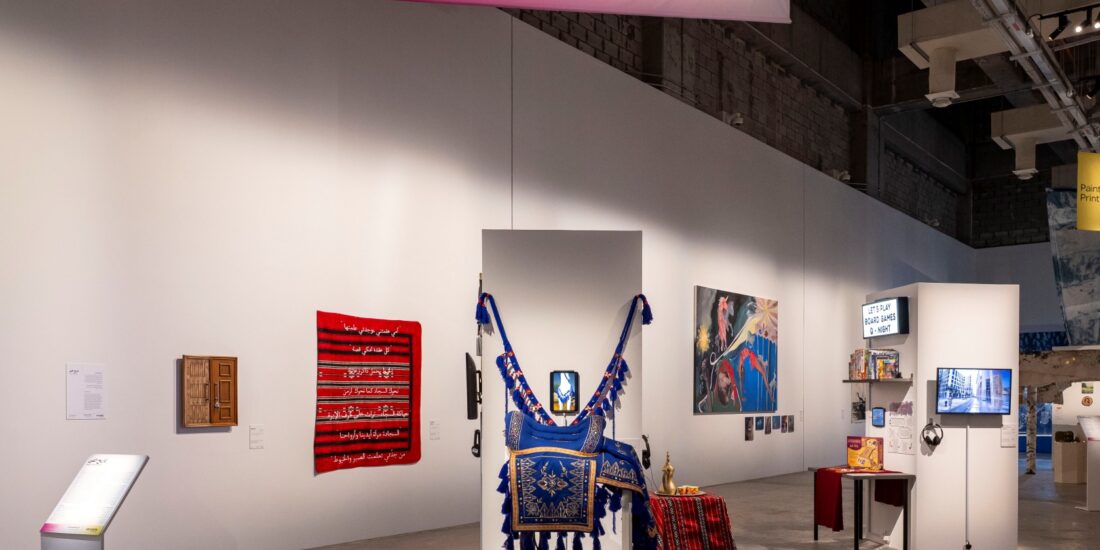VCUarts Qatar MFA Graduate Targets Cleaner Skies for Lahore
“Into Thin Air” is one of the MFA projects showcased at the Virginia Commonwealth University School of the Arts in Qatar (VCUarts Qatar), highly anticipated Year End Show: Art and Design Now 2025. The Year-End Show is on view till July 5 at M7 in Msheireb Downtown Doha. We focus on one of the most convincing design solutions showcased by a VCUarts Qatar graduate student of MFA, Syed Muhammad Erzum Naqvi, that threw light on the innovative and often boundary-pushing work of the graduating students.

The repurposed kites designed by Syed Muhammed Erzum.
For VCUarts Qatar graduate student of MFA, Syed Muhammad Erzum, visits to his hometown of Lahore in Pakistan is no longer as joyous as it was before. An asthmatic by condition, his trips grew infrequent, each visit clouded — quite literally—by the worsening air quality that now blankets the city, especially in winter. The thick smog not only dims his view of the vibrant city he loves, but also confines him indoors for days at a time. It was this personal struggle, paired with a deep love for his homeland, that sparked Erzum’s thesis project “Into Thin Air.”
This project born from Erzum’s lived experience, transforms a public health crisis into a creative, community-driven design solution. It explores how cultural practices — specifically Lahore’s historic kite-flying tradition — can intersect with science to combat environmental pollution and reclaim public life.

The Year-End Show of MFA/BFA graduates of VCUarts Qatar attracted a lot of attention and viewers this year.
“When I visit, I have trouble seeing the city that I love through the thick smog,” Erzum explains. “Every year, the smog gets worse. Every year, I see less of the city that I call home.”
During a visit in summer 2024, Erzum was struck by how the brightness, festivity, and sense of community he associated with Lahore seemed to have faded into a grey haze. Conversations with locals revealed a resigned attitude toward the crisis: while many used air purifiers or stayed indoors, there was little hope or belief that they could actively improve the city’s air quality. This collective apathy only intensified Erzum’s resolve.

Into Thin Air at Art and Design Now 2025 Show at M7.
“It was a shame that the smog was taking all the beauty of Lahore away. Everyone I talked to felt like they had just accepted the pollution as an inevitability. I wanted to change that. I wanted Lahore to be as bright and colourful as I remembered it. I wanted to see the community gather together and be able to reclaim the air of the city that raised us.”
The project’s evolution reflected his ambitious intention. Initially conceived as a speculative design piece visualising the dystopian reality of Lahore’s pollution, the work soon morphed into something more actionable. Through an interview with a local pulmonologist, Erzum realized that raising awareness was not enough—Lahoris already understood the problem all too well. What they lacked were tangible solutions.
Solutions backed by Research and Culture

UV-VIS graph
This insight led Erzum into the world of scientific research. Though the idea of using photocatalysts—substances that can break down pollutants under light — piqued his interest, he first dismissed it as out of reach. That changed when faculty at VCUarts Qatar introduced him to Dr. Rola Al-Soubaihi, a researcher also focused on air pollution. This connection became a pivotal moment, unlocking the scientific foundation his project needed to move from concept to reality.
 With the photocatalyst identified, Erzum began exploring ways to integrate it into an object that would resonate with the people of Lahore. The answer was both symbolic and practical: kites.
With the photocatalyst identified, Erzum began exploring ways to integrate it into an object that would resonate with the people of Lahore. The answer was both symbolic and practical: kites.

Kite Asembley
 “Lahore already had a historical kite festival,” he explains, referring to the Basant Festival, a once-vibrant celebration that has since diminished under government bans and health concerns. “My memories of the Basant festival embodied the bright, colourful, happy city of my childhood. If I could make a kite that could clean the air, I could bring people together and turn an object of play into an object that could make a real difference.”
“Lahore already had a historical kite festival,” he explains, referring to the Basant Festival, a once-vibrant celebration that has since diminished under government bans and health concerns. “My memories of the Basant festival embodied the bright, colourful, happy city of my childhood. If I could make a kite that could clean the air, I could bring people together and turn an object of play into an object that could make a real difference.”

Joint Printing.
Designing these air-purifying kites brought new challenges. Erzum had no prior background in science or nanotechnology. Yet with the support of his academic committee and the Nanotechnology Lab, he succeeded in creating a project that is, in his words, “truly interdisciplinary.”
“It brings together elements of science, design, culture, and history to create something that can give hope to Lahoris for real, meaningful change.”
Into the Future
 Looking ahead, Erzum sees Into Thin Air not as a one-time thesis project, but as a prototype for broader, scalable impact. His ambition is to develop it further for implementation in Lahore, with the hope that these kites can spark community action and remind residents of their collective power—even in the face of systemic environmental challenges.
Looking ahead, Erzum sees Into Thin Air not as a one-time thesis project, but as a prototype for broader, scalable impact. His ambition is to develop it further for implementation in Lahore, with the hope that these kites can spark community action and remind residents of their collective power—even in the face of systemic environmental challenges.
More broadly, the experience has shaped Erzum’s future path.
 “I found this to be a very successful project in working with scientists and other experts,” he reflects. “I think there is a lot of value in reaching out to researchers and helping translate their work into tangible solutions that can help people.”
“I found this to be a very successful project in working with scientists and other experts,” he reflects. “I think there is a lot of value in reaching out to researchers and helping translate their work into tangible solutions that can help people.”
In a time when the scale of climate-related issues can feel paralysing, Into Thin Air offers a breath of fresh air — a hopeful intersection of culture, collaboration, and creativity, led by someone who simply wants to see his city breathe again.
All Images Courtesy VCUarts Qatar




